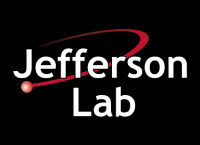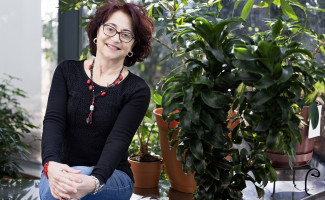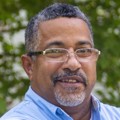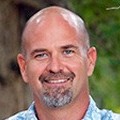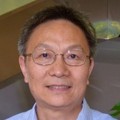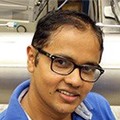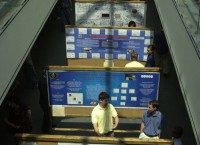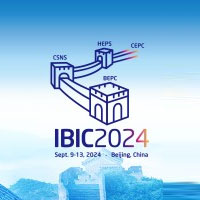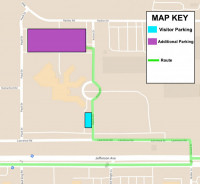A strong force in physics shows impact beyond the lab
With a passion for understanding how the universe works and a curious desire to unfold theories with logic, it’s no wonder that Patrizia Rossi ventured into physics and is now the deputy associate director for Experimental Nuclear Physics at the U.S. Department of Energy’s Thomas Jefferson National Accelerator Facility. With more than 35 years of research experience, her contributions to the scientific field are just as impactful beyond the lab.
This year, Rossi began serving on the Italian Scientists & Scholars in North American Foundation (ISSNAF) scientific board under the High Patronage of the President of the Italian Republic. Through the ISSNAF, she has been appointed to present an award this upcoming November at the Italian Embassy in Washington, D.C., as the co-chair of the 2023 ISSNAF Young Investigator INFN Bruno Touschek Award for Research in Fundamental Physics.
“This is a prestigious recognition for young Italian researchers working here in North America, and I’m excited to have the opportunity to present it,” she said. “I enjoy the relationship of working with both countries, because the science community creates a strong link between Italy and the U.S.”
This award honors the memory of Bruno Touschek for his pioneering work in the fields of elementary particle physics and particle accelerators.
Rossi’s inspiring contributions don’t stop there. Since 2013, she has been a research professor at George Washington University and the managing editor for the “Reviews” and “Letters to the Editor” sections of the European Physical Journal A (EPJA). She has also served or is serving on many other scientific committees, including the High Energy Physics Advisory Panel (HEPAP) and the Nuclear Science Advisory Committee (NSAC). She has co-authored more than 250 refereed journal papers.
Additionally, she spent many years collaborating on the 12 GeV Upgrade project with her contributions to the paper “Physics with CEBAF at 12 GeV and Future Opportunities,” which highlights accomplishments of the 12 GeV program.
An Empowering Force for Women in Physics
Rossi has experienced many memorable moments during her journey; however, her most impactful moment was when she graduated with her physics degree from the University of Rome “La Sapienza” in 1986, a prestigious university for studying physics. She exhibited her resilience due to her passion for the subject. Despite women making up 30% of the program at her university, it was still an uncommon course of study.
“During this time period, physics was a very niche concentration,” Rossi recited. “I remember people dropping out because of how difficult the program was. So, it felt like a huge accomplishment to be able to graduate with the maximum grade.”
Unlike the U.S., Italian university programs were more centralized and focused on one aspect of study. Therefore, she chose the program due to her fascination for the subject and because of its strong reputation in nuclear particle physics.
Rossi stated that over the course of her studies, she had many encouraging mentors, beginning with a high school teacher who was the catalyst that sparked her interest in physics. Among her professors were Nicola Cabibbo, Guido Altarelli and Luciano Maiani, all preeminent figures who inspired her during her time at university.
The Journey to JLab
After working at various international labs following her studies, including Laboratori Nazionali di Frascati of INFN, DESY Laboratory in Hamburg, Germany, and the European Synchrotron Radiation Facility (ESRF) in Grenoble, France, Rossi was led to Jefferson Lab in 1993 as a scientific user. Her research centered on the strong force, which is an important focus at Jefferson Lab. In 2012, she was asked to apply for a position at the lab, and she took up the offer.
“I knew this was going to be a big change with leaving my life back in Italy, but I love a challenge and love what I do here,” she said.
When she first began her career, she was focused on her own research. But in her role as deputy associate director, she shifted into overseeing and reviewing all experiments in Jefferson Lab’s Experimental Nuclear Physics division to ensure they run in the best way possible to produce high-quality physics results.
“I have learned to shape my role over time. Ten years ago, it was singularly focused on my own experiments, but over the years, it has diversified and branched out,” Rossi reminisces. “I really love working closely with people here, discussing physics, answering questions, and overall assisting the users with their experiments when I can. Interacting with ambitious and enthusiastic colleagues is a highly rewarding and motivating environment to be in!”
Rossi’s warm, inviting nature makes sense when you hear her describe herself as a people person. Her day-to-day schedule consists of coming daily to the lab, because she loves the personable interaction with her colleagues. When she isn’t at the lab, she is traveling for work, whether to present research at conferences or to serve in leadership roles for committees.
Even with an intense, but admirable schedule, she tries to end her workdays with an evening of cooking for friends to relax with good company and homemade food. Her other interests include sailing, bicycling, talking extensively to her daughter Paola (who is currently completing her postdoc on evolutionary biology in Switzerland), and reading every night before bed.
“No matter the time of night, I need to read at least a page of a book before I sleep, anything from South American to Italian and French literature, as well as essays,” she chuckles. “Recently, I read about the role of many great mathematicians in how they invented and discovered the math that we use today. I enjoy learning about those that are often undervalued, such as Sofya Kovalevskaia, the first woman to receive a Ph.D. in mathematics, who made noteworthy contributions to analysis and partial differential equations.”
Life Lessons
Looking back on her career, Rossi says that the most important part to feeling content is making sure that she is fulfilled intrinsically without compromising her values, always maintaining intellectual integrity, and doing what she loves most to the best of her ability. And Rossi's advice to others?
“Always do what you love and what you have a passion for. You will need to have enthusiasm, perseverance, hard work and remember to never give up on what you want to achieve,” she said. “A commitment to following through on what you say you will do and gaining trust will take you far.”
Rossi continues to look forward to the future at Jefferson Lab, so that nuclear particle physics research can persist to expand and grow. Her leadership in producing a recent paper, “Strong Interaction Physics at the Luminosity Frontier with 22 GeV Electrons at Jefferson Lab,” showcases her immense hopes to see potential upgrades to the Continuous Electron Beam Accelerator Facility (CEBAF) in the future.
By Lauren Weber


